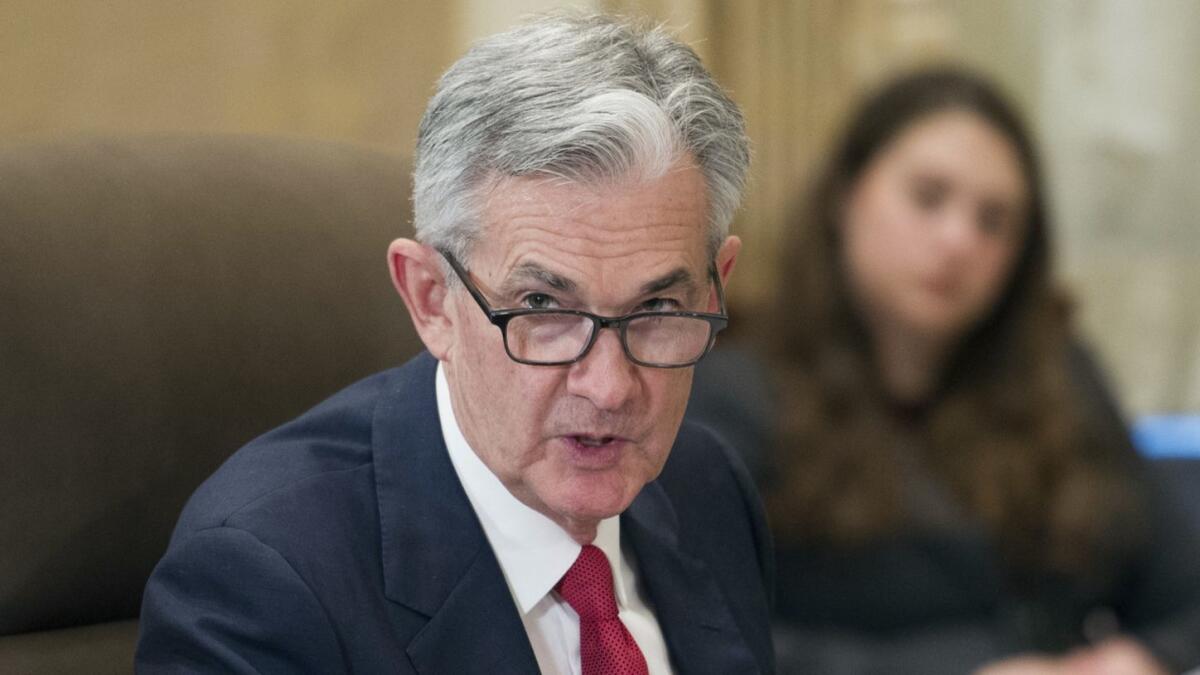Federal Reserve says U.S. economy is in a sweet spot despite the trade war

The U.S. economy is in a sweet spot where it’s growing but not overheating, the Federal Reserve said Friday in its latest official report to Congress.
Growth is solid, unemployment is low and price increases are modest, the Fed said. The only real notes of caution in the 63-page report were sharply rising oil prices and the escalating trade war, but the Fed said it sees little sign so far that either of those factors is likely to derail the economy.
The Fed said repeatedly in the report that it plans to raise interest rates at a “gradual” pace. Some economists and Wall Street traders fear that inflation will rise rapidly from President Trump’s recent tax cuts and his burgeoning trade war, forcing the Fed to increase interest rates quickly to counterbalance it. Inflation hit a six-year high in June of 2.9%, according to government data released this week.
But the Fed said that inflation is only a “little above” its 2% target and that members of the committee that set interest rates want to see a “sustained return to 2% inflation” after years of undershooting the target.
“I think the economy’s in a really good place,” Fed Chairman Jerome Powell said in an interview Thursday with National Public Radio. “I wouldn’t say we’ve fully achieved [the inflation target] yet. We’re not declaring victory there.”
Powell will testify before Congress next week, giving lawmakers a chance to push him more on his views of inflation, growth and wages, which are still growing only sluggishly. Average hourly earnings grew 2.7% in the past year, meaning inflation is eating up all of the average American’s pay increase.
The higher inflation reading this week was primarily driven by a surge in gasoline prices, which have jumped more than 24% in the last year. The Fed typically monitors inflation by stripping out gas and food costs, which tend to be highly volatile. Excluding food and fuel, inflation was up 2.3% in the last year, the Labor Department reported this week.
A sudden jump in oil prices in the 1970s caused inflation to climb rapidly and prompted the Fed to hike interest rates to the high double digits, a scenario that pinched many small businesses and homeowners. But the Fed doesn’t anticipate that happening now.
“Higher oil prices now imply much less of a net overall drag on the economy than they did in the past,” the Fed wrote in the report, noting the United States is producing more oil at home and thus benefiting from rising prices. “The negative effect of upward moves in oil prices should get smaller still as U.S. oil production grows and net oil imports decline further.”
The report made little mention of trade other than to say that many of the Fed’s policymakers cited “trade policy as posing downside risks to growth forecasts.” Powell has been careful not to opine on issues such as trade and tax policy that he believes are better left to Congress and the White House.
“I think this [trade] process that is going on now is a new one. It’s very difficult to predict how it turns out and we’ll just have to see,” Powell said in the NPR interview.
Most economists and market strategists think Powell won’t deviate from the slow and steady pace of rate hikes the Fed has laid out for the rest of 2018 and 2019.
“I see no reason for the Fed to move off the current path they have laid out of raising rates gradually. They don’t want to surprise the market,” said Bryan Besecker, a market strategist at BNY Mellon. “Powell’s goal is not to surprise the market.”
Long writes for the Washington Post.
More to Read
Inside the business of entertainment
The Wide Shot brings you news, analysis and insights on everything from streaming wars to production — and what it all means for the future.
You may occasionally receive promotional content from the Los Angeles Times.










